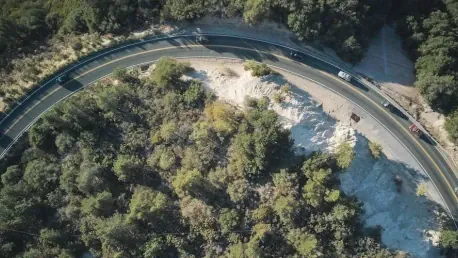The Transportation Committee recently convened to discuss future path system planning, focusing on the integration and enhancement of transportation infrastructure. As populations grow, the need for expanded, more efficient pathways becomes increasingly critical in order to accommodate a larger number of users. This article delves into the key points from the committee’s discussions, which encompassed the importance of connecting underserved areas, leveraging new technologies, and utilizing community feedback to shape future developments.
Addressing Population Growth and Pathway Expansion
As urban areas continue to expand due to population growth, the demand for efficient and accessible transportation pathways becomes ever more urgent. The committee emphasized the necessity of extending current path systems to accommodate the increasing number of users. This involves not only expanding existing routes but also creating new pathways that connect emerging neighborhoods and business districts. By implementing these measures, cities can ensure that all residents have access to reliable and convenient transit options.
Moreover, expanding pathways can help alleviate congestion on existing routes. With more options available, commuters can choose less crowded paths, which leads to a more balanced distribution of traffic. This, in turn, can reduce travel times and improve overall system efficiency. The committee highlighted that strategic planning is crucial in the expansion process, ensuring that new pathways are integrated seamlessly into the existing infrastructure. The aim is to create a cohesive and efficient network that serves the growing population effectively.
Promoting Sustainable Transit Options
In addition to expanding pathways, the committee stressed the importance of promoting sustainable transit options to address environmental concerns. As concerns about climate change and environmental impact continue to rise, cities must prioritize eco-friendly transportation solutions. This commitment includes investing in bike lanes, pedestrian walkways, and public transit systems that reduce the reliance on personal vehicles, thus contributing to a decrease in carbon emissions.
By encouraging the use of sustainable transit options, cities can significantly decrease their carbon footprint and foster a healthier environment. The committee discussed a variety of strategies to promote these options, such as implementing bike-sharing programs, improving public transit accessibility, and creating incentives for residents to use eco-friendly modes of transportation. These efforts aim to create a more sustainable and resilient transportation system that benefits both the environment and the community.
Connecting Underserved Areas
One of the committee’s key points was the urgent need to connect underserved areas through improved transportation pathways. Many communities, particularly those in low-income or rural regions, lack access to reliable transportation options, limiting residents’ ability to access essential services, employment opportunities, and recreational activities. Addressing this issue is pivotal for promoting social equity and inclusion.
To bridge this gap, the committee proposed targeted investments in transportation infrastructure for underserved areas. This involves extending existing routes to reach these communities and creating new pathways that provide direct connections to key destinations, such as employment centers, healthcare facilities, and educational institutions. By enhancing transportation access in underserved areas, cities can promote greater equity and inclusivity in their transit systems. This fosters a sense of community and ensures that all residents have equal opportunities to thrive.
Leveraging New Technologies for System Efficiency
Another major topic of discussion was the potential of new technologies to improve system efficiency in transportation pathways. Advances in technology offer numerous opportunities to enhance the overall functionality of transportation systems, from real-time traffic monitoring to automated route optimization. The committee explored various technological solutions that could streamline operations and improve user experience.
For instance, implementing smart traffic management systems can help reduce congestion and improve traffic flow. These systems use sensors and data analytics to monitor traffic conditions and adjust signal timings accordingly. Additionally, integrating mobile apps and digital platforms can provide users with real-time information about route options, travel times, and service disruptions. By leveraging these technologies, cities can create more efficient and user-friendly transportation systems that cater to the needs of a diverse population.
Eliminating Redundancies and Optimizing Current Routes
A critical aspect of enhancing path systems is the elimination of redundancies and optimization of current routes. The committee underscored the importance of conducting thorough assessments of existing pathways to identify areas of overlap and inefficiency. By streamlining routes and eliminating unnecessary redundancies, cities can significantly improve the overall efficiency of their transportation systems.
This process involves analyzing traffic patterns, user behavior, and route performance to determine which pathways are underutilized or redundant. Based on comprehensive analysis, cities can make informed decisions about route adjustments, consolidations, or eliminations. The goal is to create a more streamlined and efficient network that meets the needs of all users, ensuring that resources are allocated effectively and that transportation pathways operate at their highest potential.
Engaging the Community in Path System Planning
Community feedback plays a crucial role in shaping future path system developments. The committee recognized the importance of involving residents in the planning process to ensure that transportation solutions are user-centric and responsive to local needs. Engaging the community can provide valuable insights into user preferences, pain points, and areas for improvement, leading to more effective and well-rounded transportation planning.
To facilitate community engagement, the committee proposed various strategies such as public consultations, surveys, and interactive workshops. These initiatives aim to gather input from a diverse range of stakeholders, including residents, business owners, and advocacy groups. By incorporating community feedback into the planning process, cities can develop transportation pathways that are better aligned with the actual needs and expectations of their users. This collaborative approach ensures that the public feels a sense of ownership and confidence in the transportation improvements being made.
Adopting a Data-Driven Approach
The Transportation Committee emphasized the importance of adopting new strategies and technologies to improve path systems. New technologies such as electric scooters, autonomous vehicles, and smart traffic management systems can enhance transportation efficiency and safety. Additionally, incorporating community feedback in planning processes helps to understand local needs, preferences, and concerns, leading to more successful projects.
In summary, the committee’s meeting underscored the critical need to adapt and improve transportation pathways through a combination of technological advances and community involvement, aiming to create a more cohesive and efficient system for the future.









